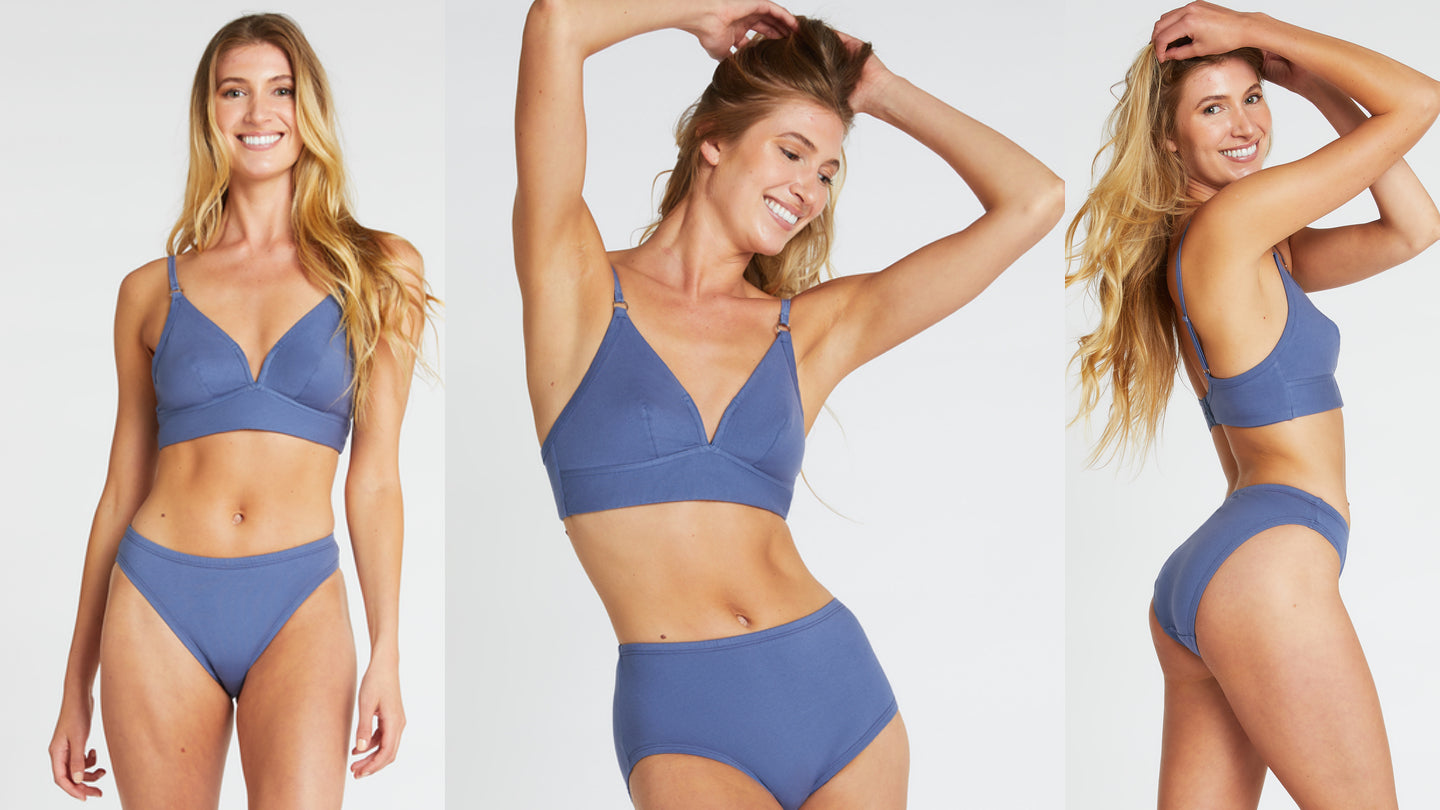Completing the B Corps application for The Very Good Bra forced me to learn so much more about my business – its impact and supply chains in particular – when I thought I already knew it inside out. It also began to tell me things about the industry, and particularly the end of life for textiles more generally, that I was so dumbfounded and shocked it forced me into a whole new project.
As a regular surveyor of our customers, I was aware that although our bras are compostable or worm-able at end of life, those who don’t have access to these facilities would love a take-back service. I knew only 12% of our buyers have no access to compost, worms or a garden (almost 70% of our respondents have composts and 30% worm farms!) but I wanted to look into better end-of-life outcomes for that small minority, which included myself as an urban apartment dweller.
I started by calling some commercial compost firms, who loved the idea. They understood the problem, they just needed an AS5810 certification and they’d be happy to take any bras into compost. Great! I found some labs and called them, asking if they could test our product to certify home compostabilty with AS5810, and they couldn’t because this Australian Standard (AS) only applies to bio-plastic mailing bags. After many circular conversations of this nature with industry participants and labs and scientists who all thought it was a great idea and would love to support it but couldn’t, I realised a take-back wasn’t do-able simply for the lack of any consistent, repeatable and certifiable testing standard for textiles in Australia or globally. I was astounded.
We all know the stats. Global estimates tell us the textiles industry (across production, manufacture, use and disposal) generates around 1.2 billion tonnes of CO2e emissions every year – or 6-8% of the global total. Natural fibre textiles, just like synthetic textiles, generate methane gas when disposed of to landfill – which is unfortunately the only available end-of-life scenario for textiles in Australia.
Creating new recovery pathways for natural fibre textiles and avoiding landfill is critical to the low carbon future now committed to a host of future minded organisations along with every state government of Australia (who have now committed to net-zero targets by 2030). But how do we get there?
I teamed up with Blake Lindley from consulting firm Cirq Solutions, and together we rallied stakeholders across government, the textiles industry – clothing, uniforms and bedding, composters, industry bodies, consumer organisations and universities over a period of 6 months, receiving over 15 letters of support to submit with our application for a new Australian Standard for textile composting. Just a day after submission we received a response and a zoom appointment for the following week. Expecting to have to lobby for the cause, we were delighted that Standards Australia absolutely understood and supported our idea to address an issue which they could see was a really big problem that needed solving. We tweaked our scope and now we are on our way!
There is much work to be done. Right now it feels like actually inventing a wheel, but Australian Standards is wrapping a team around the project and will consult with industry and key stakeholders in the public domain over the next 1-2 years to gain consensus over the appropriate testing, and how the AS can be administered in a world where garments can contain multiple materials from multiple jurisdictions – unlike a simple bio-plastic bag or food container.
With 600,000 tonnes of textiles entering landfill each year in Australia alone, if we could save just 10% that's 60,000 tonnes! With greenwashing rife in our industry and many new self-certified ‘biodegradable’ products being marketed, a clearly articulated testing standard would make things clearer for consumers trying to do the right thing. It would also incentivise designers and brands to design out synthetics at the outset in order to make their products meet the AS for composting at end of life. At present, compostable components (like sewing thread and elastic) are more than 10 times the cost of regular ones and need to be imported into Australia. An AS will encourage local innovation in terms of materials and make it worthwhile for brands to pay the extra premium in order to be able to legitimately and confidently certify their products as compostable at end of life.
It’s the beginning of an exciting journey and I’m grateful for the B Corps process for really opening my eyes to the issue, and to the host of supporters along the way who are helping make it happen.
Read the full AFR article here











